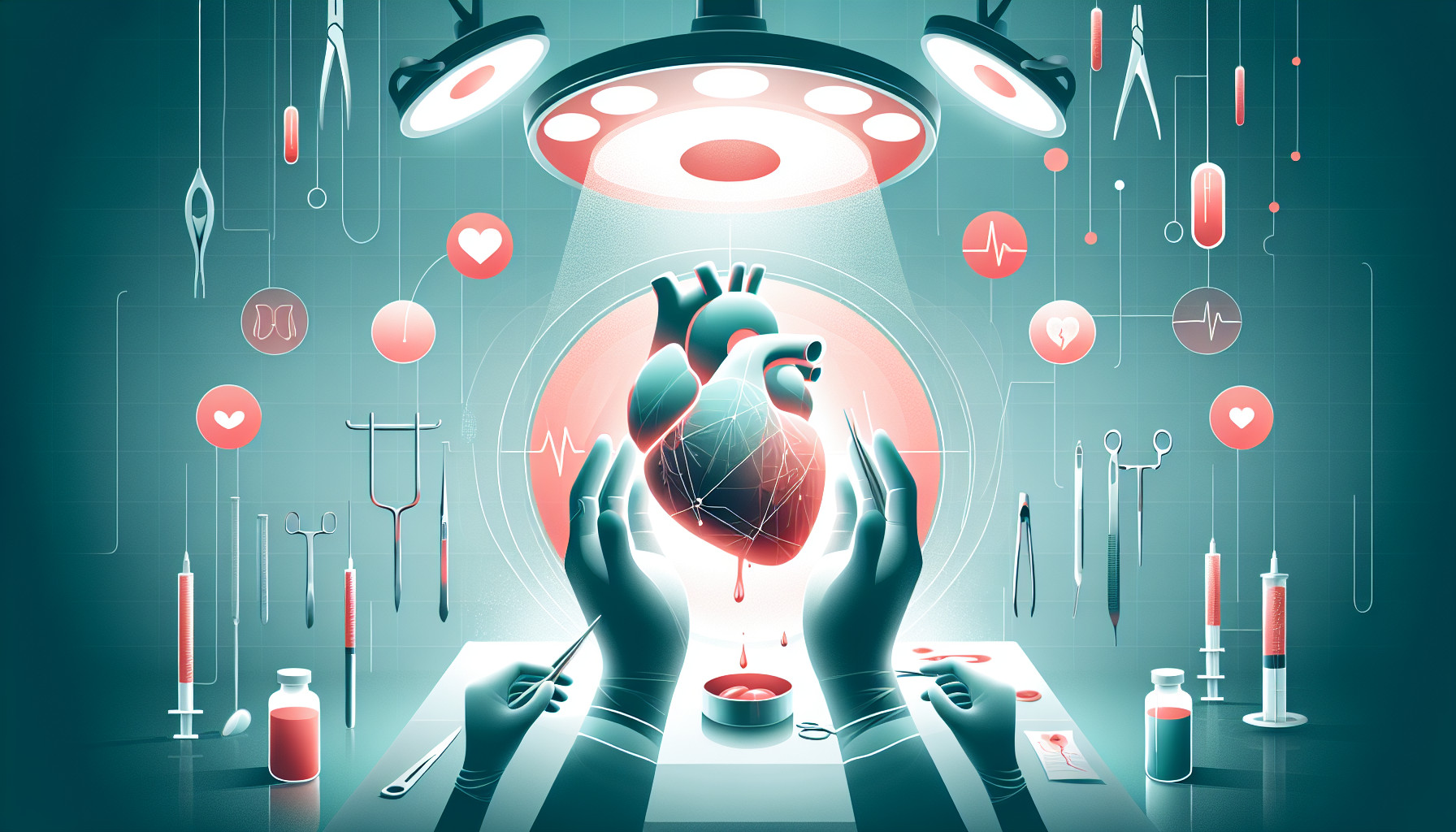Our Summary
This research paper discusses the topics of innovation, robotic cardiac surgery, and training. It likely explores the latest advancements in robotic technology used in heart surgeries and how these innovations are improving patient outcomes. The paper might also delve into the training required for surgeons to effectively use these high-tech tools. In simpler terms, it’s about how new technologies are helping doctors perform heart surgeries more efficiently and safely, and how doctors are learning to use these advancements.
FAQs
- What is robotic cardiac surgery?
- How does innovation play a role in robotic cardiac surgery?
- What kind of training is required for performing robotic cardiac surgery?
Doctor’s Tip
One helpful tip a doctor might tell a patient about cardiac surgery is to follow their post-operative instructions carefully, including taking any prescribed medications, attending follow-up appointments, and following a healthy diet and exercise plan. It is also important to communicate any concerns or changes in symptoms to their healthcare team.
Suitable For
Patients who are typically recommended cardiac surgery include those with:
Coronary artery disease: This is a condition where the blood vessels that supply the heart muscle with oxygen and nutrients become narrowed or blocked, leading to chest pain (angina) or a heart attack.
Valve disease: This includes conditions such as aortic stenosis (narrowing of the aortic valve), mitral regurgitation (leaking of the mitral valve), or other abnormalities of the heart valves that affect blood flow through the heart.
Congenital heart defects: These are heart abnormalities that are present at birth and may require surgical repair or correction.
Heart failure: This is a condition where the heart is unable to pump enough blood to meet the body’s needs, often due to weakened heart muscle or other underlying heart conditions.
Arrhythmias: These are irregular heart rhythms that may require surgery to correct or manage, such as implanting a pacemaker or defibrillator.
Aneurysms: These are bulges in the wall of a blood vessel, often in the aorta, that can be at risk of rupturing and may require surgical repair.
It is important for patients to undergo a thorough evaluation by a cardiac surgeon and other members of the healthcare team to determine if they are candidates for cardiac surgery and to discuss the risks and benefits of the procedure.
Timeline
Before cardiac surgery:
- Patient is diagnosed with a heart condition that requires surgical intervention.
- Patient undergoes pre-operative testing and evaluation to assess their overall health and suitability for surgery.
- Patient meets with the cardiac surgeon to discuss the procedure, risks, and potential outcomes.
- Patient may undergo additional imaging or testing to further assess the extent of their heart condition.
- Patient is admitted to the hospital on the day of surgery and undergoes pre-operative preparation.
After cardiac surgery:
- Patient is taken to the operating room and undergoes the cardiac surgery procedure under general anesthesia.
- After surgery, patient is transferred to the intensive care unit (ICU) for close monitoring and recovery.
- Patient may be on a ventilator to assist with breathing and receive pain medication to manage discomfort.
- Patient is gradually weaned off the ventilator and is encouraged to start moving and walking as soon as possible.
- Patient is transferred to a regular hospital room once stable and continues to receive care and monitoring from the medical team.
- Patient undergoes physical therapy and rehabilitation to regain strength and mobility.
- Patient is discharged from the hospital and continues to follow up with their cardiac surgeon for post-operative care and monitoring.
What to Ask Your Doctor
- What specific type of cardiac surgery do I need and why?
- What are the risks and potential complications associated with this surgery?
- How experienced are you in performing this type of surgery?
- What is the expected recovery time and rehabilitation process after the surgery?
- What are the potential long-term effects or complications of the surgery?
- Are there any alternative treatment options to consider?
- Will I need any additional tests or evaluations before the surgery?
- What can I expect in terms of pain management during and after the surgery?
- How will my cardiac condition be monitored and managed post-surgery?
- What lifestyle changes or modifications may be necessary after the surgery to ensure optimal recovery and long-term heart health?
Reference
Authors: Oosterlinck W, Gianoli M, Palmen M, Folliguet T, Bonatti J, Agnino A, Singh S, Franke U, Modi P, Pereda D, Kempfert J, Navarra E, Suwalski P, Vojacek J, Casselman F, Myers P, Sadaba JR, Melfi F, Hazekamp M, Bavaria J, Beyersdorf F, Milojevic M, Falk V, Cerny S. Journal: Eur J Cardiothorac Surg. 2024 Oct 1;66(4):ezae339. doi: 10.1093/ejcts/ezae339. PMID: 39353655
